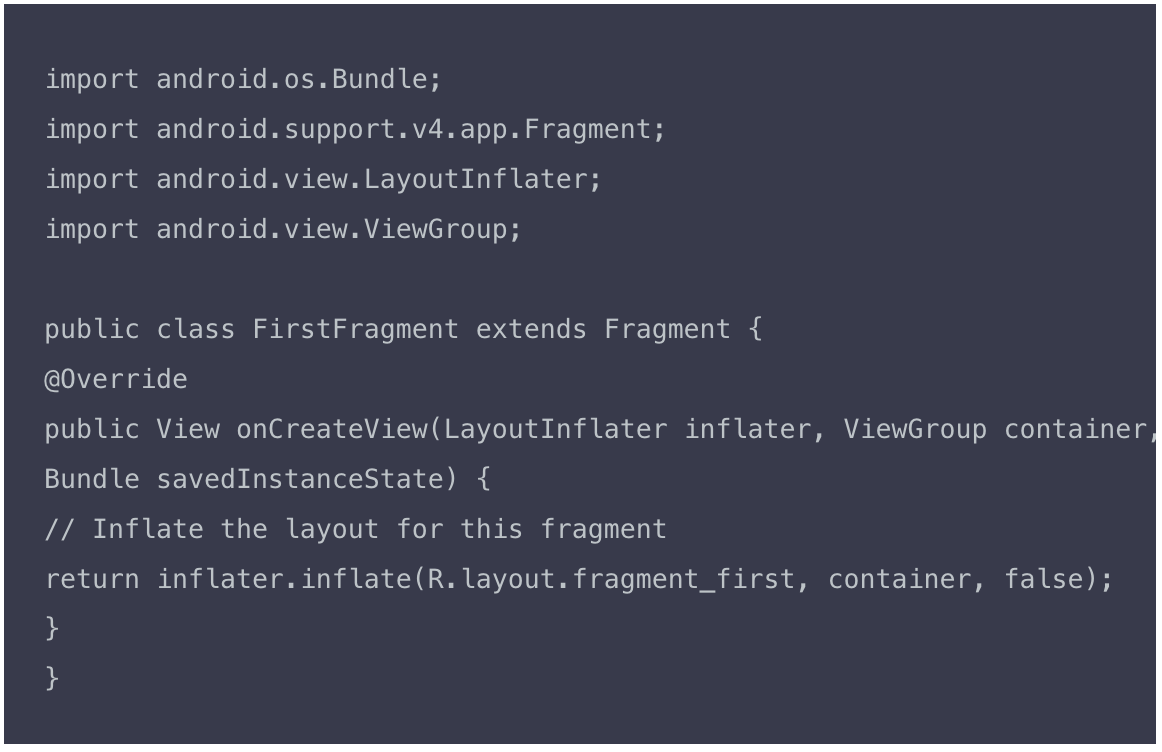

OnAttach(): called when the Fragment is first associated with (“added to”) an Activity, and thus gains a Context. The Fragment lifecycle is very similar to the Activity lifecycle, with a a couple of additional steps: However, Fragments also have their own lifecycle with corresponding lifecycle callbacks functions.

If the Activity is destroyed, the Fragment is too). (e.g., if the Activity is paused, the Fragment is too. Because of this, a Fragment’s lifecycle is directly tied to its containing Activity’s lifecycle. While it’s possible to have Fragments that are not visible or that don’t have a UI, they still are part of an Activity. They should not depend on the Activity they are inside, so that you can be flexible about when and where they are displayed!Īlthough Fragments are like “mini-Activities”, they are always embedded inside an Activity they cannot exist independently. Instead of needing to navigate between two related views (particularly for this “master and detail” setup), the user can see both views within the same Activity… but those “views” could also be easily split between two Activities for smaller screens, because their required controller logic has been isolated into a Fragment.įragments are intended to be modular, reusable components.

10.6.1 Bonus: Sharing with a FileProvider.8.1 Intents for Another Activity (Explicit).5.1.1 Activity-to-Fragment Communication.Note : If you add Debug statements to Fragment2’s LifeCycle methods, you will notice that Fragment2’s onCreate(), onCreateView(), onViewCreated(), onStart() and onResume() methods are called before the above appears in the Logcat.Īs you can see the ViewModel still does not get Destroyed and if you navigate back to the first fragment using the back button then you will see that any data stored in the ViewModel is preserved and the onCreate() method is not called as the fragment was never destroyed. You will notice the following in your Logcat :įragment LifeCycle: onDestroyView Called! Note : You will need to setup Navigation Component to navigate between fragments.
Android studio fragment oncreateview code#
Now rotate your mobile or emulator, you will not see the “viewModel Destroyed” entry in your Logcat, this is because the ViewModel does not get destroyed on configuration changes and thus can be used to store data.īut does the ViewModel get destroyed if we navigate to another fragment and what about the fragment itself? Let’s try it out!Īdd another button to your layout and in its ClickListener add the following code : Now when you start your app you will also notice : Add the following methods in your ViewModel : Now if you click outside the dialogue you will notice :īut what happens to the ViewModel during all this? Well let’s experiment with that as well. When you click this button you will notice in your Logcat : This is just an implicit intent to send some data to someone else. To test this just add a button to your fragment layout and on its Click Listener write the following code : Implicit Intent That makes things a little clearer, but are onPause() and onResume() only called with other methods? No, onPause() is called when the app loses focus and OnResume() is called when it is in focus. Now if you minimize your app you will notice :Īnd if you open it again you will notice : When you open your fragment you will notice these in your Logcat :įragment LifeCycle: onViewCreated Called! So open your fragment and override the above methods like this : Now that we know what the LifeCycle looks like, let’s understand it. In activities we use the onCreate() Method to inflate the layout and bind views while in case of fragments the layout is inflated in onCreateView() Method and we bind views in the onViewCreated() method. What’s the difference then? Well, a major one would be :

Fragments have similar lifecycles to Activities. If you are thinking “ That looks like the Activity LifeCycle! ”, then yes you are right. It looks something like this : Fragment LifeCycle But have you heard about the Fragment LifeCycle? If you have experimented with making an app, chances are you have probably used Fragments.


 0 kommentar(er)
0 kommentar(er)
